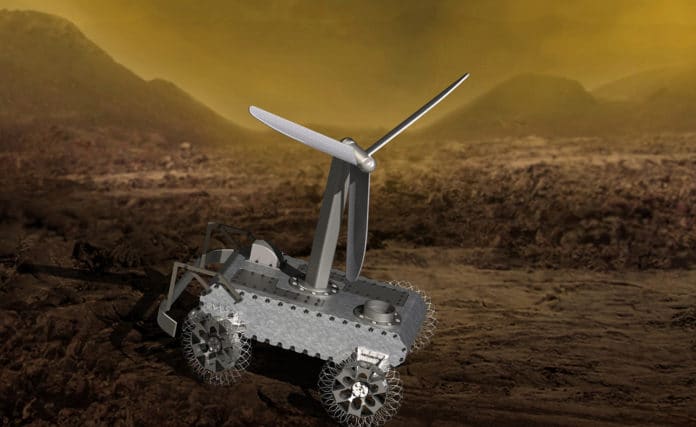Venus is the most inhospitable planet in the solar system. It is hostile to almost everything, especially to the electronics used in spacecraft. Its surface temperature exceeds 450°C, and the pressure is 92 times greater than on Earth. NASA has already designed a space rover that can withstand the conditions on Venus. However, there remains a need for sensors to help the research apparatus avoid obstacles such as rocks, crevices, and steep terrain.
Therefore, the American aerospace agency, together with the HeroX crowdsourcing platform, announced a competition to develop sensors to avoid obstacles that could work on an AREE (Automaton Rover for Extreme Environments) research device in Venus.
The difficulty of this challenge is to design a sensor that does not depend on electronic systems, as the current, state-of-the-art, military-grade electronics fail at approximately 125°C.
“This is an exciting opportunity for the public to design a component that could one day end up on another celestial body,” said Ryon Stewart, challenge coordinator for the NASA Tournament Lab at the agency’s Johnson Space Center in Houston. “NASA recognizes that good ideas can come from anywhere, and the prize competitions are a great way to engage the public’s interest and ingenuity and make space exploration possible for everyone.”
The “Exploring Hell: Avoiding Obstacles on a Clockwork Rover” challenge offers up to $30,000 USD in prize money to create three sensors that can orient the device on rough terrain while withstanding extreme conditions. The first-place winner will have the opportunity to win up to $15,000, the second price is $10,000, and the third winner will receive up to $5000.
Anyone over the age of 18 years can participate in the competition, applications for the competition will be accepted until May 29. All projects will be considered from June 1 to July 2, and the winners will be announced on July 6. NASA asks all participants to use the current AREE design (in the featured image) and has provided all the necessary challenge guidance for the competition.
NASA actually asks people in a short period of time to develop the necessary sensors and thereby surpass all the achievements of the state space agency in this area in recent years. Most recently, the Russian space agency sent the Vega 2 lander to Venus. Nine soviet-era probes sent to Venus could last on the surface of the planet for a maximum of two hours. Modern technologies will certainly be able to solve this problem, but it will not be easy.
